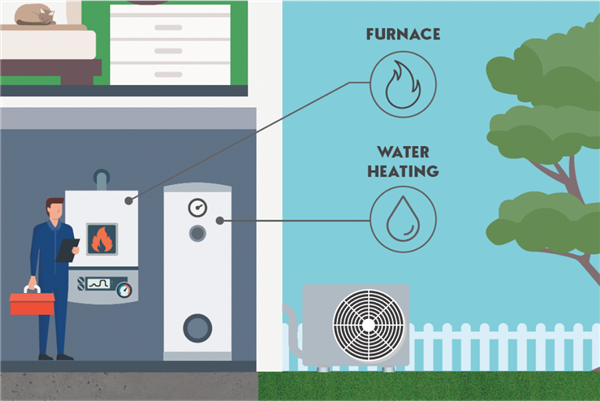Home Energy

Who doesn’t want more comfort and lower bills? Most houses today lose as much as half of their cooled/heated air because they have poor insulation, inefficient heating/cooling systems, leaky ducts, and have leaks in the attic and around doors/windows. In fact, if you add up all the little cracks and crevices, your house likely has a hole the size of a hula-hoop. It’s no wonder your feet are cold and your utility bills are high.
Your home’s energy efficiency can be improved upon in five key ways:
1. BUILDING TIGHTNESS AND AIR SEALING
Air sealing reduces drafts and heat loss by eliminating air leaks. A variety of materials are used for
air sealing, including caulk, spray foam, metal flashing, weather stripping, and rigid foam.
2. INSULATION
By providing resistance to heat flow, insulation keeps heated and cooled air inside your house, and
keeps the outside temperatures out. When correctly installed, insulation can deliver comfort and savings, especially during the hottest and coldest times of the year
• Attic insulation. Heat loss and gain are greatest at the top of a building. The attic is where you can find some of the largest opportunities to save energy in your home. Loose-fill or batt insulation is typically installed in an attic.
• Wall insulation. Your home's walls are usually the largest single surface area on the outside of the home. Drill and fill is the process of drilling holes through your walls, and then blowing in insulation. If you replace the exterior siding on your home, consider adding insulation at the same time.
• Floor insulation. Properly insulating floors will make your home more comfortable. For homes
with crawlspaces, insulation can be installed under raised floors.
3. WINDOWS
Double-pane windows have become the industry standard to make windows more energy-efficient. The efficiency of windows is rated by U-factor and Solar Heat Gain Coefficient (SHGC). U-factor measures how well the window insulates, SHGC measures how much solar heat the window lets in. Lower is better for both.
4. HVAC SYSTEM
HVAC stands for heating, ventilation, and air conditioning. Your HVAC system is responsible for heating and cooling your home and includes components like furnaces, air conditioners, and heat pumps as well as ductwork and thermostats.
• Furnaces generate heat by burning fuel, generally either natural gas or propane. The efficiency of a furnace is measured by “annual fuel utilization efficiency” (AFUE). Older furnaces can have AFUE values as low as 65 percent and can lose up to 35 percent of the energy they burn in exhaust up their flue. Newer, sealed combustion/condensing furnaces can achieve up to 97% efficiency and are safer and more economical to run.
• Air conditioning systems draw heat energy out of the house and transfer it to the outside air. The most common setup for residential homes is a split system, which includes an inside-the-home evaporative heat exchanger and an outside condensing unit heat exchanger.
• Heat pumps cool your home like air conditioners and because of a reversing valve, are also capable of providing heat. Heat pumps are powered by electricity and are very energy efficient making them more environmentally friendly. Heat pump systems can be ducted or ductless. Ductless heat pump systems are a great option for homes without room for duct systems and are highly energy efficient because duct losses are eliminated. Ductless heat pump systems can be
configured with multiple indoor units that allow homeowners to adjust the system to heat or cool
certain rooms only when they're occupied, instead of heating or cooling the entire home.
• Programmable thermostats can save up to 10 percent of annual heating and cooling costs by making it easy to automatically regulate your home's temperature when you are at home, asleep or away.
5. WATER HEATING
Water heaters account for up to 20 percent of a household's utility bills. Low cost improvements that you can do yourself include learning how to safely lower your water heater temperature and insulate your hot water pipes. As a long-term investment, consider installing an energy efficient water heater.
• Electric heat pump. Heat pump water heaters are up to four times more efficient than standard
models, and lower your energy costs by using a process that transfers heat from the surrounding air to the water.
• Going tankless. By heating water only when it is needed, going tankless can cut gas water heating expenses by 30 percent compared to standard gas storage water heaters, while also providing continuous hot water.
• Gas or electric resistance storage. Look for water heaters with high Uniform Energy
Factors (UEFs).